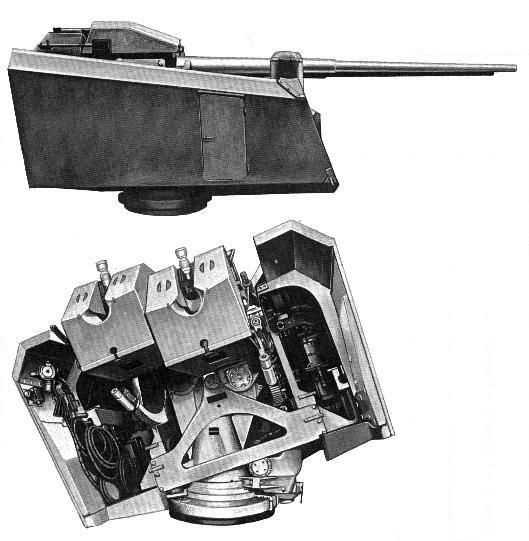|
Note the triaxial mounting in the picture below. This was intended to be able to compensate for the motion of the ship and so maintain target lock. Unfortunately, this mounting proved to be susceptible to electrical faults as it was not sufficiently waterproofed and the mountings were opened to the weather. These earlier mounts had limited RPC. The "H" class battleships were to have much improved enclosed mounts with full RPC, but these ships were never completed. An interesting post-war usage of these guns was on the French destroyers Guichen and Châteaurenault. These were the former Italian light cruisers Scipione Africano and Atilio Regolo which were ceded to France in 1948. All of their Italian armament was removed and they were rearmed with six German 10.5 cm/65 guns and ten French 57 mm/60 AA guns. Earlier guns were of loose barrel construction, but later guns designated as SK C/33 na had a two-piece barrel with a heavier jacket and were considerably lighter. A late war design that was designated as SK C/33 nT had the two pieces redesigned as a forward loose muzzle piece and the rear part as a short loose liner. |

10.5 cm/65 SK C/33 Twin Mounting showing the triaxial motion |
| .
|